Introduction
A buzzing fret(s) is a common ailment of guitars that come through the shop door. Usually, the fix requires leveling one or more high frets to the height of the other frets. Occasionally, the buzzing frets are a result of an over-tightened truss rod by a tech or player trying lower the guitars string height over the fingerboard. While tightening the truss rod may have lowered the action, it also result in severe fret buzz during the dryer months of Winter. Clearly, someone who did the work did not understand the purpose of a truss rod.
This article will explore why truss rods are needed and when and how they should be adjusted.
Defining Neck Relief
Neck Relief is the bend in a guitar neck resulting of string tension putting a very slight bow in the neck. The amount of neck relief of a neck will change as the instrument ages and seasonally as the instrument is exposed to low humidity (winters) and higher humidity (summer) environments. All guitar necks should have a tiny amount of relief in order avoid the strings “buzzing” on some of the frets.
Truss rods embedded in guitar necks, compensate for excessive bowing by bending the neck in the opposite direction of the bow.
Checking Neck Relief
Checking neck relief is easily accomplished by simultaneously fretting the low-E string at the 1st and 14th fret then observing the height of the string bottom above the 8th fret (Figure 1.) The height of the bottom of the string and the 8th fret is the relief. This is a three-handed operation best accomplished with a capo on the first fret as a third “hand” while your right hand frets the 14th fret and the the left hand uses a measuring device (feeler gauges or a rule with 1/64″ divisions) to measure the string gap at the 8th fret.

Much Relief Should My Guitar Have?
The proper amount of neck relief is a function of the guitar type (acoustics need more than electrics), the preference of the player, and the uniqueness of the guitar. On acoustic guitars, I set the relief to be between 1/64” to 1/32” (0.0156” – 0.0312”). Electrics are about 1/128” – the string is almost touching the fret, but you can still see “daylight” between the string and the fret. These measurements are guidelines and are not carved in stone.
A Truss Rod Adjustment is Not a Guitar Set-up
Straightening the neck by cranking on the truss rod will not take the place of a proper set-up . While you may get a temporary improvement in the instrument’s playability, this instrument may become ladened with fret buzz during environment (seasonal) changes. A proper set-up requires the neck relief to be set prior to any nut or saddle work. Once a proper set-up is performed on the instrument, the truss rod can be adjusted to compensate for the neck straightening and bending during seasonal humidity changes.
How a Truss Rod Works
The truss rod is a piece of metal with two threaded blocks welded to each end (Figure 2). A second rod of metal with turned ends are screwed into the threaded blocks. This second rod has either an allen socket or hex nut on one end allowing for it to be tightened or loosened. When tightening the rod, the entire truss rod assembly bends into a bow shape, when loosened, it will straightened. The assembly is installed in the neck so when it is tightened, it bends in the opposite direction of the the neck is bowing bowing. This counteracts the force of the strings and straightens the neck. Figures 3 and 4 show a bowed and straight truss rod respectively.
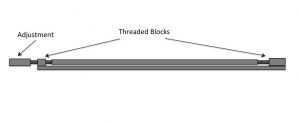
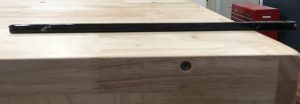
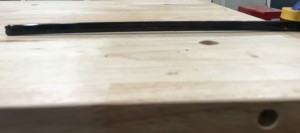
Accessing The Truss Rod
The adjustment ends of truss rods are located in in the headstock that may or may not have a truss rod over (Figures 5. and 6. ), or inside the body of an acoustic guitar (Figure 7.). Some Stratocasters have the adjustment end of the truss rod at the body-end of the fretboard and the neck needs to be loosened from the body and tipped up as to access the truss rod. In this case, its best to leave this work to a reputable professional.
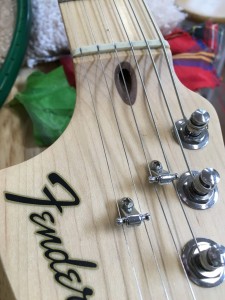


Summary
So there you have it. Neck relief is the amount of bend in a guitar (electric or acoustic) neck. It is determined by string tension and environmental condition and the proper amount to insure good playability without fret buzz is set by adjusting the truss rod. If the instrument has had a good set-up, you can make these adjustments yourself to compensate for changes in the neck during dryer and damper seasons.
Happy Playing!
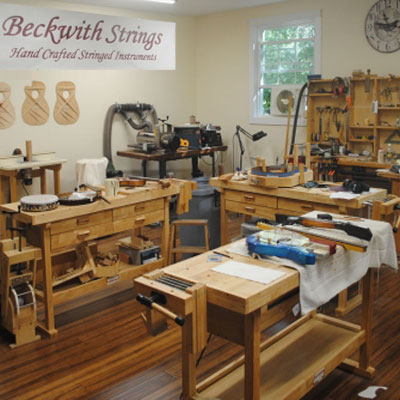 Steve Beckwith has handcrafted over one hundred acoustic stringed instruments to address the need of musicians unable to find the exact sound from mass manufacturing instruments.
Steve Beckwith has handcrafted over one hundred acoustic stringed instruments to address the need of musicians unable to find the exact sound from mass manufacturing instruments.
I just bought a brand new guitar. I like good action on the fret board. I proceeded to tighten the truss rod as to get the neck straight.
I have the sound hole truss rod nut maxed out, or all the way tightened.
I’m disappointed in that I have a brand new guitar and I can’t get the usual flexability with the truss rod.
I have heard of taking off the nut and putting in a spacer or washer so there is more room to adjust but that I’ve seen done on a truss rod where it is at the top of the neck.
I wanted to do that with the sound hole truss rod nut but when I loosen it up it eventually just locks. The nut won’t come off so I can’t add a washer to the truss rod.
Does any body have an idea on how to fix my problem without major surgery.
Thank you very much if you do.
Tom,
Sorry for the delay in answering your post as I missed a WordPress alert of your post. First thing, you won’t be able to add washers to the TR because a.) difficulty if not impossible to access the TR. More importantly, if it is a two-way TR, then it the adjustment end is inside a space carved out of the head block. If it is a one-way TR, then it extends through the head-block but it is too close to the top to allow for a washer that is wider than the TR.
You may also have a misconception of the purpose of the truss rod. While it has an impact on string height, it is not how a proper set-up is done on a guitar (I have a posting on proper set-ups). However, if you’re unhappy with the playability of the instrument, you should consider asking the store you purchased it from to set it up to your standards. If this is impossible, you may want to return the instrument and find another one that works for you. After all, it’s your money!